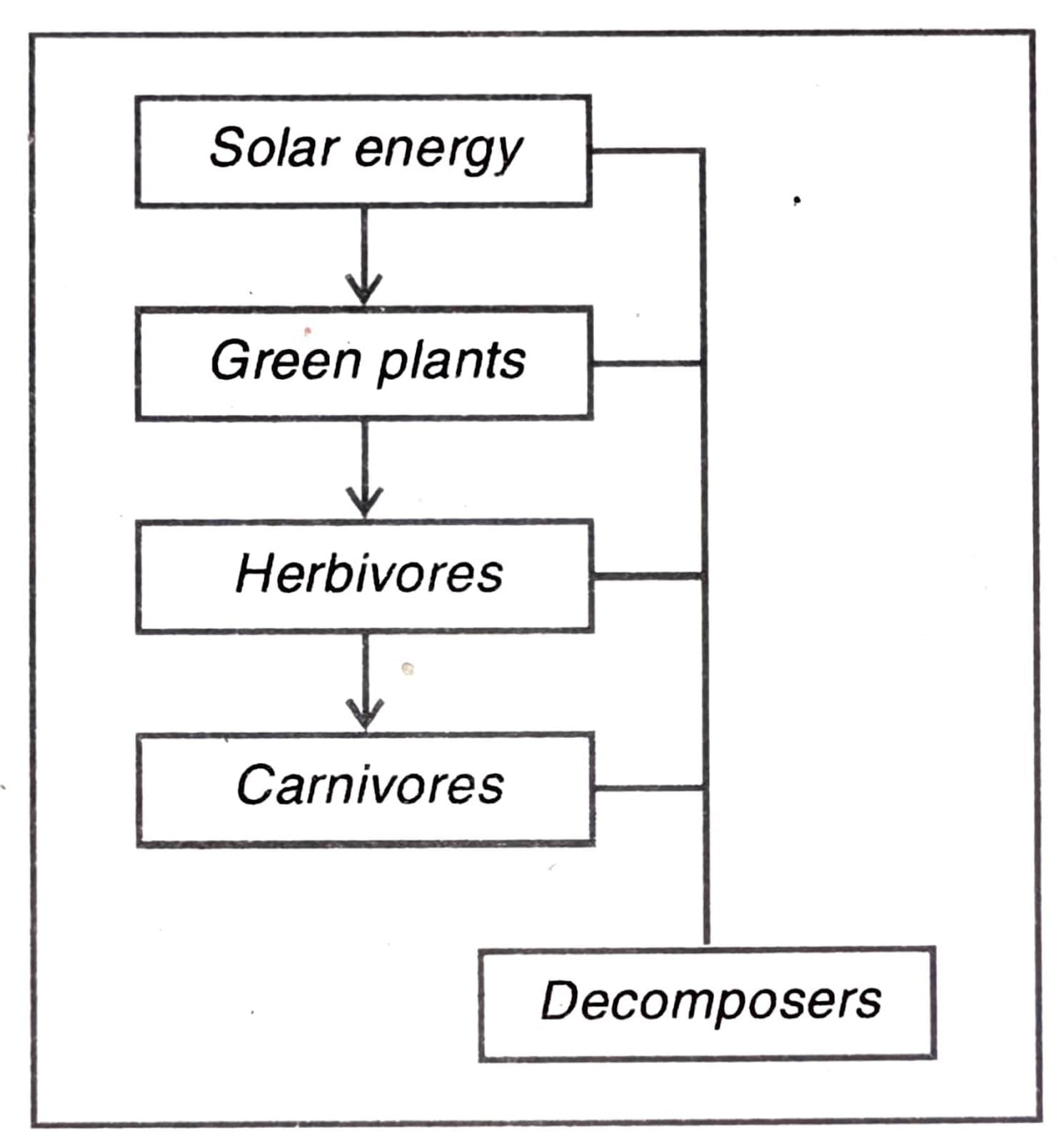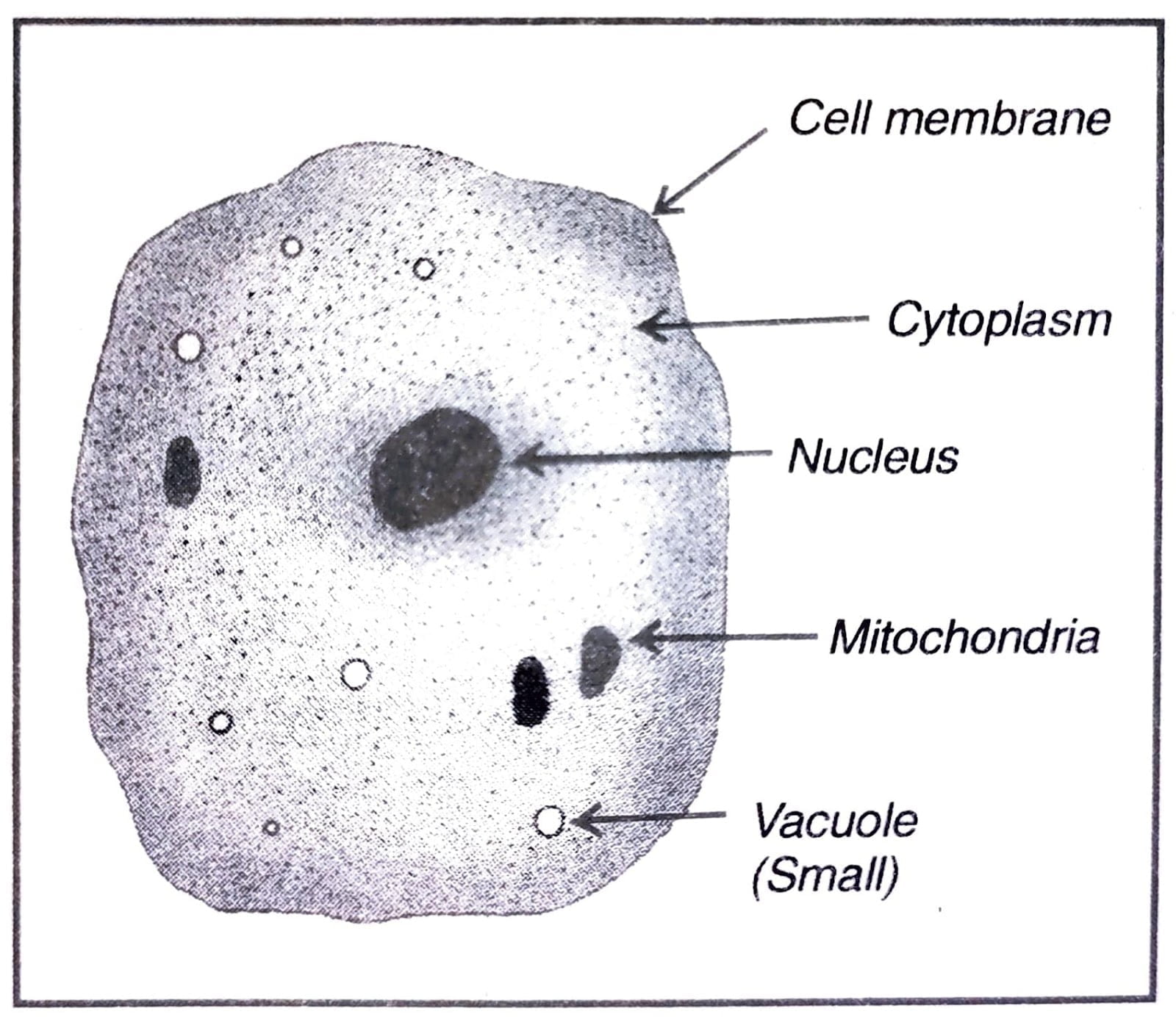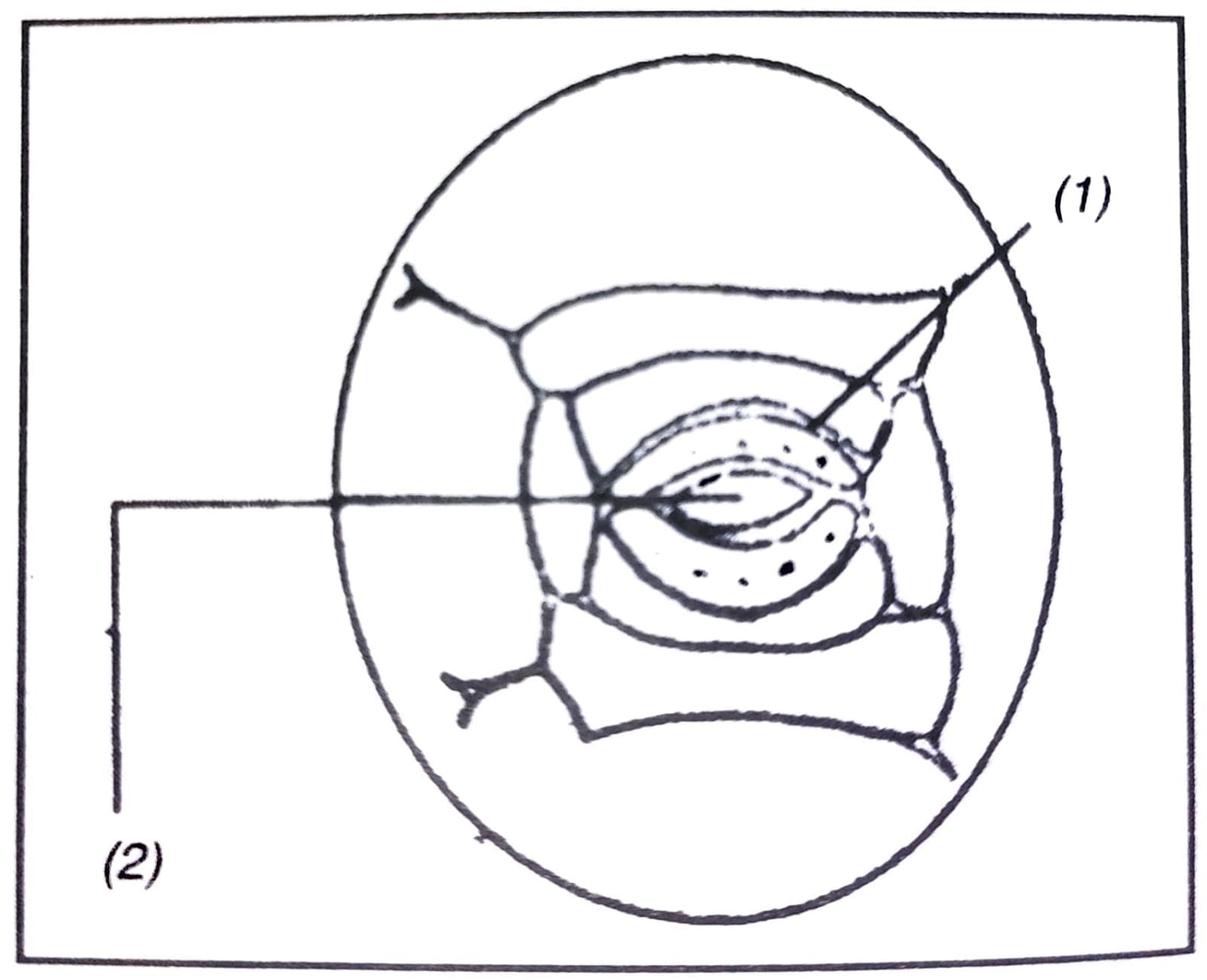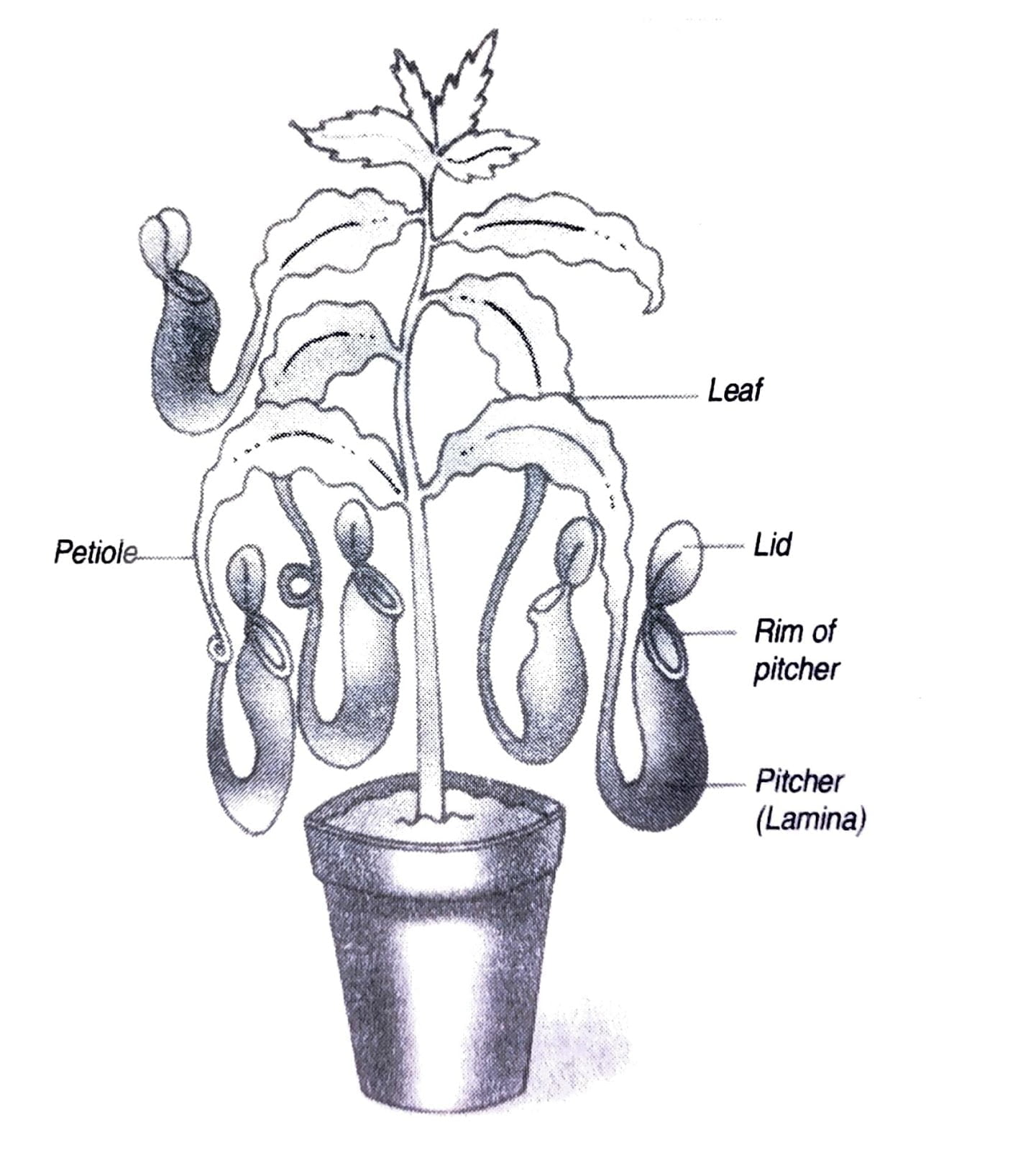NCERT Class 7 Science Chapter 1 Nutrition in Plants Solutions to each chapter is provided in the list so that you can easily browse through different chapters NCERT Class 7 Science Chapter 1 Nutrition in Plants and select need one. NCERT Class 7 Science Chapter 1 Nutrition in Plants Question Answers Download PDF. NCERT Class 7 Science Solutions.
NCERT Class 7 Science Chapter 1 Nutrition in Plants
Also, you can read the NCERT book online in these sections Solutions by Expert Teachers as per Central Board of Secondary Education (CBSE) Book guidelines. CBSE Class 7 Science Solutions are part of All Subject Solutions. Here we have given NCERT Class 7 Science Chapter 1 Nutrition in Plants and Textbook for All Chapters, You can practice these here.
Nutrition in Plants
Chapter: 1
NCERT TEXT BOOK EXERCISES
Q.1. Why do organisms need to take food?
Ans: Food is needed by all organisms for the following purposes:
(i) The main function of food is to help in growth.
(ii) Second important function of food is to provide energy. We need energy for doing physical work. We use more energy when we run than when we walk and less energy when we sleep.
(iii) Food is also needed by living beings for replacement and repairing their damaged body parts:
(iv) Food gives us resistance against diseases and protects us from infections.
Q. 2. Distinguish between a parasite and a saprotroph.
Ans:
| Parasite | Saprotroph |
| 1. Parasite feeds on a living organism. | 1. Saprotroph feeds on dead and decaying organism. |
| 2. The organism on which it feeds is called host. | 2. They do not feed on a living organism. |
| 3. A parasite takes readymade food from the organism on which it feeds. | 3. They secrete digestive juices on the matter they live and convert it into a solution and then absorb it. |
Q. 3. How would you test the presence of starch in leaves ?
Ans: Starch test:
(i) Take the green leaf to be tested.
(ii) Boil it in water for 5 minutes.
(iii) Keep it in the 60% ethyl alcohol at 60°C, till it becomes colour less.
(iv) Take out the colour less leaf from alcohol and wash it with cold water.
(v) Pour few drops of dilute iodine solution on the leaf. The leaf becomes blue with the solution which proves the presence of starch in the leaf.
Q. 4. Give a brief description of the process of synthesis of food in green plants.
Ans: The green plants have chlorophyll in the leaves. The leaves use CO2, and water to make food in presence of sunlight.

During photosynthesis oxygen is released.
Q.5. Show with the help of a sketch that the plants are the ultimate source of food.
Ans:

Fig. 1.9. Sketch to show that plants are the ultimate source of food.
Q. 6. Fill in the blanks:
(a) Green plants are called _______ since they synthesise their own food.
Ans: (a) autotrophs.
(b) The food synthesized by the plants is stored as ________.
Ans: (b) solar energy.
(c) In photosynthesis solar energy is captured by the pigment called ________.
Ans: (c) chlorophyll.
(d) During photosynthesis plants take in _______ and release _________.
Ans: (d) carbon dioxide, oxygen.
Q. 7. Name the following:
(i) A parasitic plant with yellow, slender and tubular stem.
Ans: (i) Cuscuta (Amarbel).
(ii) A plant that has both autotrophic and heterotrophic mode of nutrition.
Ans: (ii) Pitcher plant.
(iii) The pores through which leaves exchange gasses.
Ans: (iii) Stomata.
Q. 8. Tick the correct answer:
(a) Amarbel is an example of:
(i) Autotroph
(ii) Parasite
(iii) Saprotroph
(iv) Host
Ans: (a) (ii) Parasite.
(b) The plant which traps and feeds on insects is:
(i) Cuscuta
(ii) China rose
(iii) Pitcher plant
(iv) Rose
Ans: (b) (iii) Pitcher plant.
Q. 9. Match the items given in Column I with those in Column II:
| COLUMN – I | COLUMN – II |
| (a) Chlorophyll | (i) Bacteria |
| (b) Nitrogen | (ii) Heterotrophs |
| (c) Amarbel | (iii) Pitcher plant |
| (d) Animals | (iv) Leaf |
| (e) Insects | (v) Parasite |
Ans:
| COLUMN – I | COLUMN – II |
| (a) Chlorophyll | (iv) Leaf |
| (b) Nitrogen | (i) Bacteria |
| (c) Amarbel | (v) Parasite |
| (d) Animals | (ii) Heterotrophs |
| (e) Insects | (iii) Pitcher plant |
Q. 10. Mark T if the statement is true and ‘F” if it is false:
(i) Carbon dioxide is released during photosynthesis.
Ans: (i) False.
(ii) Plants which synthesize their food themselves are called saprotrophs.
Ans: (ii) False.
(iii) The product of photosynthesis is not a protein.
Ans: (iii) False.
(iv) Solar energy is converted into chemical energy during photosynthesis.
Ans: (iv) True.
Q. 11. Choose the correct option from the following:
(a) Which part of the plant takes in carbon dioxide from the air for photosynthesis?
(i) Root hair
(ii) Stomata
(iii) Leaf veins
(iv) Sepals.
Ans: (ii) Stomata.
(b) Plants take carbon dioxide from the atmosphere mainly through their:
(i) Roots
(ii) Stem
(iii) Flowers
(iv) Leaves
Ans: (iv) Leaves.
ADDITIONAL IMPORTANT QUESTIONS
Very Short Answer Questions
Q. 1. Name the pores through which leaves exchange gases.
Ans: Stomata.
Q. 2. Name the process by which plants make food.
Ans: Photosynthesis.
Q. 3. Name any one plant which has nitrogen fixing Rhizobium bacteria in its roots.
Ans: Pea plant.
Q. 4. Why do the patches of green layer floating on the surface of stagnant water bodies like ponds and lake consist of?
Ans: Algae.
Q. 5. What kind of nutrition occurs in fungi?
Ans: Heterotrophic.
Q. 6. Which raw material is primarily responsible for the release of oxygen in photosynthesis?
Ans: In photosynthesis, oxygen is released from water.
Q. 7. (a) Name a gas used in photo- synthesis.
Ans: (a) Carbon Dioxide.
(b) Name a gas produced in photosynthesis.
Ans: (b) Oxygen.
Q. 8. What name is given to those organisms:
(a) Which can make their own food?
Ans: (a) Autotrophs.
(b) Which depend on their organisms for food?
Ans: (b) Heterotrophs.
Q. 9. What type of nutrition is shown by non-green plants?
Ans: Heterotrophic (Saprophytic) nutrition.
Q. 10. What is the function of chlorophyll?
Ans: Chlorophyll captures the energy of sunlight.
Q. 11. Give an example of insectivorous plant.
Ans: Pitcher plant.
Q. 12. Name the form in which carbohydrates are stored in the plants.
Ans: Starch.
Q. 13. Where does the process of photosynthesis take place in a plant?
Ans: The process of photosynthesis takes place in the green leaves of a plant.
Q. 14. The leaves of a plant first prepare a simple food A by photosynthesis. Some of the food A is converted into food B and gets stored in the plant for later use. What are A and B?
Ans: A is glucose and B is starch.
Q. 15. Name the organelles of plant cells in which photosynthesis occurs.
Ans: Chloroplast.
Short Answer Questions
Q. 1. Is nutrition a necessity for an organism? Discuss.
Ans: Yes, Food is required for:
(i) acquiring energy for various metabolic processes of the body.
(ii) the growth of new cells.
Q. 2. Name the factors which affect photosynthesis.
Ans: The factors which affect photosynthesis are:
(i) Light
(ii) Temperature
(iii) Water and
(iv) Carbon dioxide
Q.3. Differentiate between an autotroph and a heterotroph.
Ans:
| Autotroph | Heterotroph |
| 1. Organisms that prepare their own food. | 1. Organisms that are dependent on other organisms for food. |
| 2. They have chlorophyll. | 2. They lack chlorophyll. |
Q. 4. “All animals depend upon the plants for their food”. Justify the statement.
Ans: All living organisms need food for energy. Plants can make their own food but animals can not. Food is necessary for all the organisms. So, all the animals directly or indirectly depend upon the plants for their food.
Q. 5. How does the fungus get its nutrition?
Ans: Fungus takes its food from dead and decaying matter. The digestive juice of fungus convert the dead materials into solution. Then it absorbs nutrients from it.
Q. 6. How does pitcher plant get its nutrition?
Ans: In the pitcher plant, the leaf blade is modified into a long tubular pitcher to form a pit fall trap with sticky liquid inside. When an insect enters the pitcher, it gets trapped in a sticky liquid inside the pitcher. The insect then gets slowly digested by this sticky liquid.
Q. 7. Write the importance of Rhizobium bacteria for the farmers.
Ans: The Rhizobium bacteria convert atmospheric nitrogen into soluble form. In this way Rhizobium plays an important role for the farmers because it helps farmers to save fertilisers and manures.
Q. 8. What are stomata ? What is their role?
Ans: Stomata are the tiny pores present on the surface of leaves.
Role: Massive gaseous exchange takes place in the leaves through stomata for the purpose of photosynthesis and respiration.
Q. 9. What are the various conditions necessary for photosynthesis?
Ans: The various conditions necessary for the process of photosynthesis are:
(i) Presence of carbon dioxide
(ii) Presence of water
(iii) Presence of chlorophyll and
(iv) Presence of sunlight
Q. 10. Draw a diagram to show a animal cell.
Ans:

Fig. 1.10. Animal cell.
Short Answer Questions
Q. 1. Some plants are both parasite and saprophyte. Explain with examples.
Ans: There are some plants which survive like parasites as well as saprophytes. For example, Lichen.
In lichen algae which is green in colour and lives on the upper side of the plant in the sun and prepares its own food during photo-synthesis. The lower part of lichen is fungus which is saprophyte in nature. Both live together in it.
Q.2. The leaves of a plant combine a gas A taken from air and a liquid B taken from he soil in the presence of sunlight to make a simple food C by the process called D. Some of the simple food C gets converted into a complex food E which is stored in the various parts of the plant including its leaves.
(a) What are: (i) gas A and (ii) liquid B?
(b) What are: (i) food C, and (ii) food E?
(c) (i) Name the process D. (ii) Which of the two foods C or E, will give blue-black color with dilute iodine solution?
Ans: (a) (i) Carbon dioxide (ii) Water.
(b) (i) Glucose (ii) Starch.
(c) (i) Photosynthesis (ii) Food
E. Q.3. Explain parasitic mode of nutrition with two examples.
Ans: The parasitic nutrition is that nutrition in which an organism derives its food from the body of another living organism (called its host) without killing it. The organism which obtains the food is called a parasite and the organism from whose body food is obtained is called the host.
Parasitic mode of nutrition is observed in several fungi, bacteria, few plants like cuscuta, and some animals like Plasmodium and Round worms.
Q.4. The organs A of a tree have a large number of tiny pores called B on their surface. Each pore is surrounded by a pair of cells called C. The opening and closing of pores in A is controlled by C. The gas D present in air enters the organs A through pores B and utilised in food making process E. The gas F produced during process E goes out through the same pores B. What are A, B, C, D, E and F?
Ans: A ― Leaves
B ― Stomata
C ― Guard cells
D ― Carbon dioxide
E ― Photosynthesis
F ― Oxygen
Q. 5. How can nutrients be replenished in the soil?
Ans: Nutrients can be replenished in the soil by:
(i) Planting plants like peas and beans alternately with other crops. Rhizobium present in such plants converts atmospheric nitrogen into water soluble forms that is absorbed by the plant along with water.
(ii) Adding fertilizers containing nitrogen to
the soil.
Long Questions Answer
Q. 1. (i) Define nutrition.
Ans: (i) Nutrition: Nutrition is the process of intake as well as utilization of nutrients by an organism.
(ii) What is a nutrient ?
Ans: (ii) Nutrient: It is any substance which an organism obtains from its surroundings and uses it either as an energy source or for the biosynthesis of body constituents.
(iii) What are autotrophs? Give examples of organisms having autotrophic nutrition.
Ans: (iii) Autotrophs: The organisms which can feed themselves or which can produce or synthesize their food at their own are called autotrophs.
Examples: Green plants and some bacteria.
(iv) What are heterotrophs? Give examples of organisms having hetero- trophic nutrition.
Ans: (iv) Heterotrophs: It is a type of nutrition in which energy is derived from the intake and digestion of the organic substances.
Examples: All animals, fungi and non-green plants.
Q. 2. (i) What is photosynthesis?
Ans: (i) Photosynthesis: The process by which green plants prepare their own food using carbon dioxide and water in the presence of sunlight and chlorophyll is called photosynthesis.
(ii) What are the raw materials for photosynthesis?
Ans: (ii) Raw materials for photosynthesis are carbon dioxide and water.
(iii) What are the end product and by product of photosynthesis?
Ans: (iii) End product ― Starch
By product ― Oxygen.
(iv) What is the source of energy for photosynthesis?
Ans: (iv) The source of energy for photosynthesis is sun.
(v) Write the reaction of photosynthesis.
Ans:

Q. 3. The lamina of the leaf of a plant P is modified into a hollow tube. The leaf apex forms a kind of lid which can open or close the mouth of hollow tube. When an organism Q falls in the hollow tube, the lid closes automatically killing the organism. The walls of hollow tube secrete digestive juices which digest the complex substances R present in the body of the organism to form simpler substance S. The simpler substances are then absorbed by the walls of the hollow tube and used by the plant P.
(a) What could the plant P be?
Ans: (a) Pitcher plant.
(b) Name the organism Q.
Ans: (b) Insect.
(c) What could the complex substances R be?
Ans: (c) Proteins.
(d) Name the simpler substances S.
Ans: (d) Amino acids.
(e) What is the general name of plants like P?
Ans: (e) Insectivorous plants.
HOTS QUESTIONS
Q.1. The plant X is found in abundance in desert areas which get meagre rainfall. The modified leaves of this plant can reduce the loss of water from this plant by transpiration. This plant has long roots which go deep into the soil so as to obtain water.
(a) What could the plant X be?
Ans: (a) Cactus plant.
(b) Which part/parts of this plant take part in photosynthesis?
Ans: (b) Stem and Branches.
(c) How does the photosynthesis in this desert plant differ from those of ordinary plants found in a garden?
Ans: (c) The photosynthesis in this desert plant is carried out by its green stem and branches whereas the photosynthesis in ordinary garden plants is carried out by their green leaves.
(d) What is the colour of the stem of this plant?
Ans: (d) Green.
Q. 2. Why are plants green?
Ans: Plants possess green chloroplast pigments called chlorophylls which absorb most of the blue and red regions of the incident light. They reflect green light so the plants look green in color.
Q.3. Plants generally store carbohydrates in the form of starch but not in the form of glucose or sucrose. Give one reason in support of such storage. An Starch is an insoluble polysaccharide which can be stored in a living cell without affecting the osmotic concentration. Sucrose and glucose are water soluble and affect the osmotic concentration so they cannot be stored for longer duration in larger amounts.
SKILL BASED QUESTIONS
Q. 1. (m) Identify the following figure and label the parts marked us 1 and 2.
Ans: (a) The figure is of the stomata leaf labeling:
(1) guard cell.
(2) stomata.

(b) Which position of stomata-open or closed shown in the figure?
Ans: (b) It shows the open position of stomata.
Q. 2. (a) Draw a diagram of a pitcher plant to show the following parts:
(i) Pitcher.
(ii) Lid.
Ans: (a)

Fig.1.12. Pitcher plant showing lid and pitcher.
(b) What is the mode of nutrition of this plant?
Ans: (b) The mode of nutrition of the pitcher plant is insectivorous.
(c) Is it an autotroph or partial heterotroph?
Ans: (c) It is partial heterotroph.
FORMATIVE ASSESSMENT
1. Fill in the blanks with suitable words:
(i) Fungi like ______ and ______ are useful.
Ans: Mushroom, Yeast
(ii) Saprotrophs secrete digestive juices on dead and decaying matter and convert it into a _______.
Ans: Solution.
(iii) The tiny spores of fungus plants are always present in ________.
Ans: Air.
(iv) In lichens, the chlorophyll containing partner is an _______.
Ans: Alga.
(v) The leather objects that are left in hot and humid weather for long time are spoiled due to the growth of _________.
Ans: Fungus.
(vi) The food synthesized by plants is stored as _______.
Ans: Starch.
(vii) In photosynthesis, solar energy is captured by the pigment called _______.
Ans: Chlorophyll.
2. Mark ‘T’ if the statement is true and F’ if it is false.
(i) Green plants are heterotrophs.
Ans: False.
(ii) All animals and humans are hetero- trophs.
Ans: True.
(iii) Blue and red regions of visible light are less effective in photosynthesis.
Ans: False.
(iv) Cuscuta is a totally parasitic plant.
Ans: True.
(v) Saprophytes are green in color.
Ans: False.
(vi) Partial parasites make their own food but depend on the host for water and minerals.
Ans: True.
(vii) The mode of nutrition in lichens is symbiotic.
Ans: True.
3. Match the items given in column I with those in column II.
| Column – I | Column – II |
| 1. Chlorophyll | (a) Rhizobium bacteria |
| 2. Nitrogen | (b) Heterotrophs |
| 3. Amarbel | (c) Pitcher plant |
| 4. Animals | (d) Leaf |
| 5. Insects | (e) Parasite |
Ans:
| Column – I | Column – II |
| 1. Chlorophyll | (d) Leaf |
| 2. Nitrogen | (a) Rhizobium bacteria |
| 3. Amarbel | (e) Parasite |
| 4. Animals | (b) Heterotrophs |
| 5. Insects | (c) Pitcher plant |
4. Write one word for the following:
(i) The process of taking food and its utilization by the body.
Ans: Nutrition.
(ii) An organism which cannot make its own food and depends on others for its food.
Ans: Heterotrophs.
(iii) The process by which green plants make their food.
Ans: Photosynthesis.
(iv) The small pores on the under surface of the leaves.
Ans: Stomata.
(v) The mode of nutrition in the plants that derive their food from the dead and decayed organic matter.
Ans: Saprophytic Nutrition.
(vi) Organisms which make their own food from simple non-living substances.
Ans: Autotrophs.
(vii) Organism which live in or on other organisms to get food and shelter from them.
Ans: Parasites.
(viii) The mode of nutrition where two organisms work together for mutual benefits.
Ans: Symbiosis.
(ix) Green pigment presents in the leaves.
Ans: Chlorophyll.
(x) The organism that provides nutrients to another organism or organisms (parasites).
Ans: Host.
5. Multiple Choice Questions
(i) Which part of the plant gets carbon dioxide from air in photosynthesis?
(a) root hair
(b) stomata
(c) leaf veins
(d) sepals
Ans: (b) stomata.
(ii) Plants take carbon dioxide from the atmosphere mainly through their:
(a) roots
(b) stems
(c) flowers
(d) leaves
Ans: (d) leaves.
(iii) Cuscuta (Amarbel) is an example of:
(a) autotroph
(b) parasite
(c) saprotroph
(d) host
Ans: (b) parasite.
(iv) The plant which traps and feeds on insects is :
(a) cuscuta
(b) china rose plant
(c) pitcher plant
(d) rose plant
Ans: (c) pitcher plant.
(v) The stem of one of the following plants can do photosynthesis.
This plant is:
(a) mushroom
(b) croton
(c) cuscuta
(d) cactus
Ans: (d) cactus.
(vi) Which of the following plant has a heterotrophic mode of nutrition?
(a) money plant
(b) croton plant
(c) cuscuta plant
(d) alga plant
Ans: (c) cuscuta plant.
(vii) Which of the following is not required for photosynthesis by the green leaves of a plant?
(a) carbon dioxide
(b) oxygen
(c) sunlight
(d) water
Ans: (b) oxygen.
(viii) The simplest food produced during photosynthesis is:
(a) starch
(b) cellulose
(c) glucose
(d) sucrose
Ans: (c) glucose.
(ix) Which of the following gas is given out during photosynthesis?
(a) nitrogen
(b) carbon dioxide
(c) oxygen
(d) water vapor
Ans: (c) oxygen.

Hi! my Name is Parimal Roy. I have completed my Bachelor’s degree in Philosophy (B.A.) from Silapathar General College. Currently, I am working as an HR Manager at Dev Library. It is a website that provides study materials for students from Class 3 to 12, including SCERT and NCERT notes. It also offers resources for BA, B.Com, B.Sc, and Computer Science, along with postgraduate notes. Besides study materials, the website has novels, eBooks, health and finance articles, biographies, quotes, and more.




